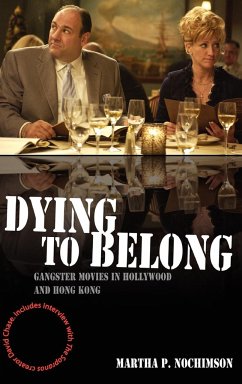Dying to Belong offers a unique look at the complex and fascinating genre of the gangster movie. Across the world, gangster films are often mistakenly viewed as an inferior and immoral - even dangerous - type of entertainment. By examining a broad range of films spanning several decades, Martha Nochimson deftly illustrates the darker, more substantial themes of dislocation and disorientation which define true gangster films.
From Little Caesar and The Godfather to The Sopranos, the gangster's tale is that of an immigrant outsider looking in. The shock the gangster film delivers is not just in its physical violence, but in its perspective on the confusing and illusory promises of upward social mobility given to newcomers in Hollywood and Hong Kong. Here, classic screen traditions are explored using a new definition of the gangster genre. Offering no excuses for gangster behavior, Dying to Belong nevertheless highlights the disturbing resemblances of these "wild, bad men" to the straight citizens of two immigrant nations, in what is sure to be a controversial analysis of films that have historically been dismissed as part of a frivolous action genre.
From Little Caesar and The Godfather to The Sopranos, the gangster's tale is that of an immigrant outsider looking in. The shock the gangster film delivers is not just in its physical violence, but in its perspective on the confusing and illusory promises of upward social mobility given to newcomers in Hollywood and Hong Kong. Here, classic screen traditions are explored using a new definition of the gangster genre. Offering no excuses for gangster behavior, Dying to Belong nevertheless highlights the disturbing resemblances of these "wild, bad men" to the straight citizens of two immigrant nations, in what is sure to be a controversial analysis of films that have historically been dismissed as part of a frivolous action genre.
